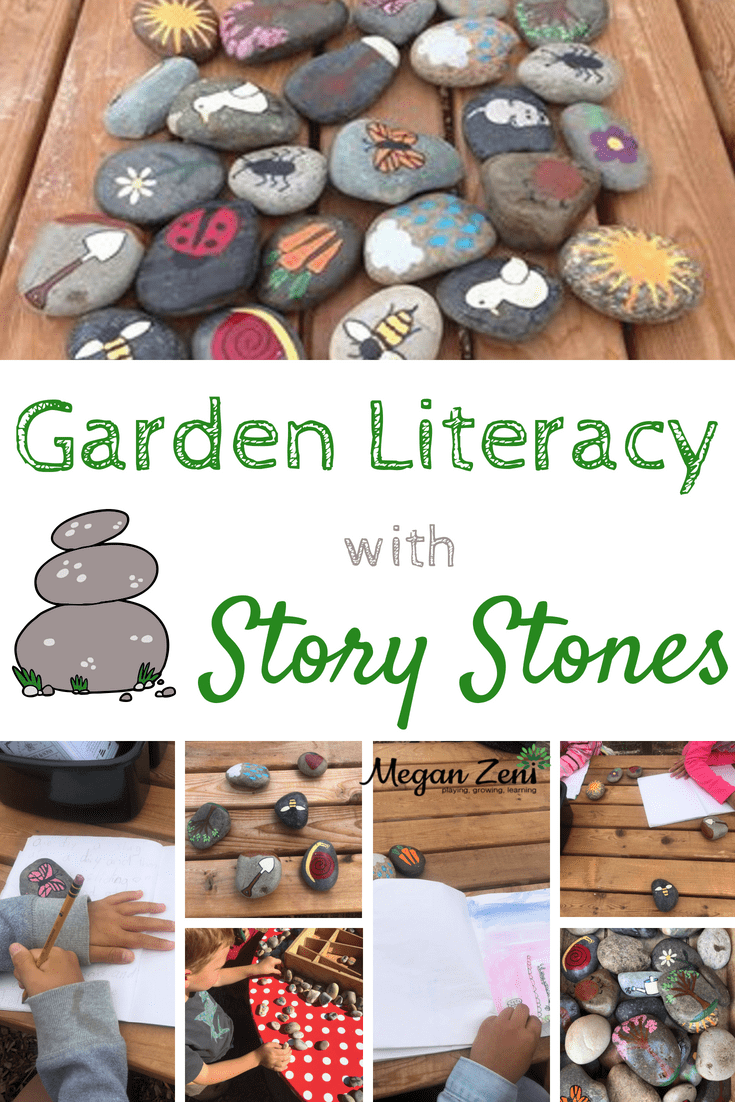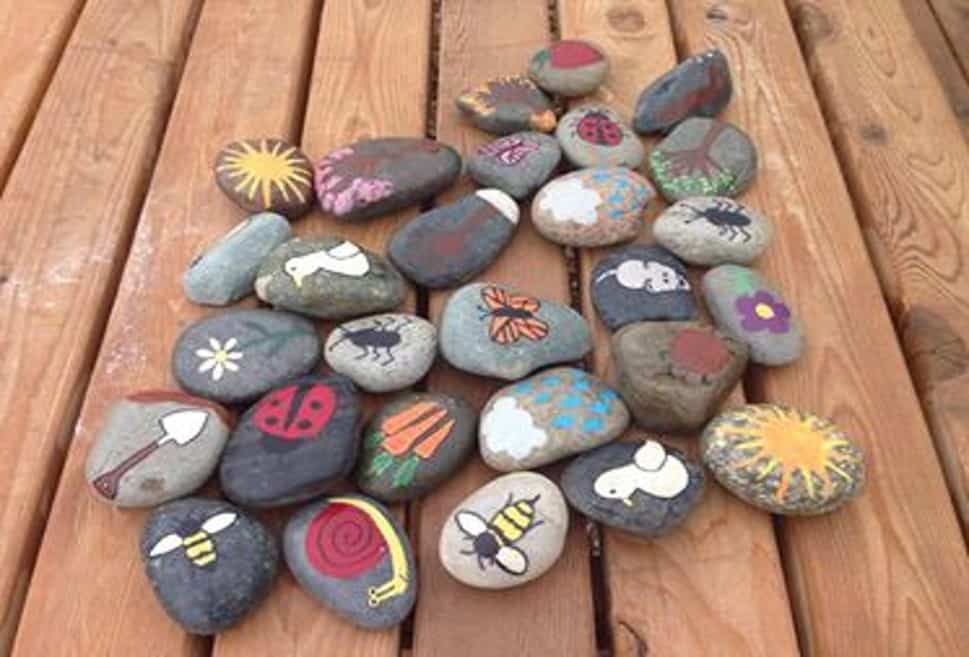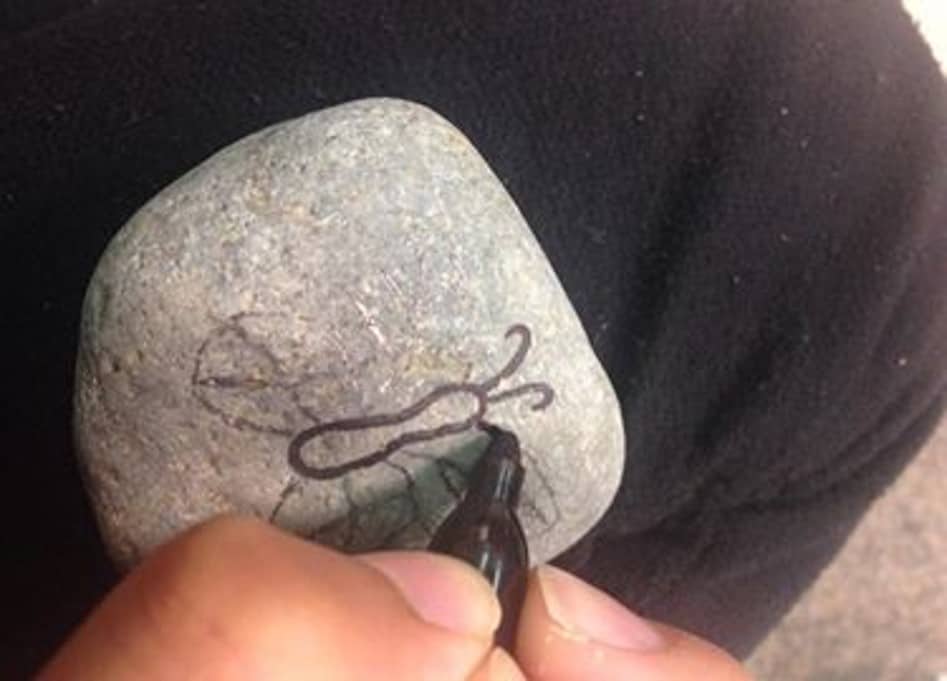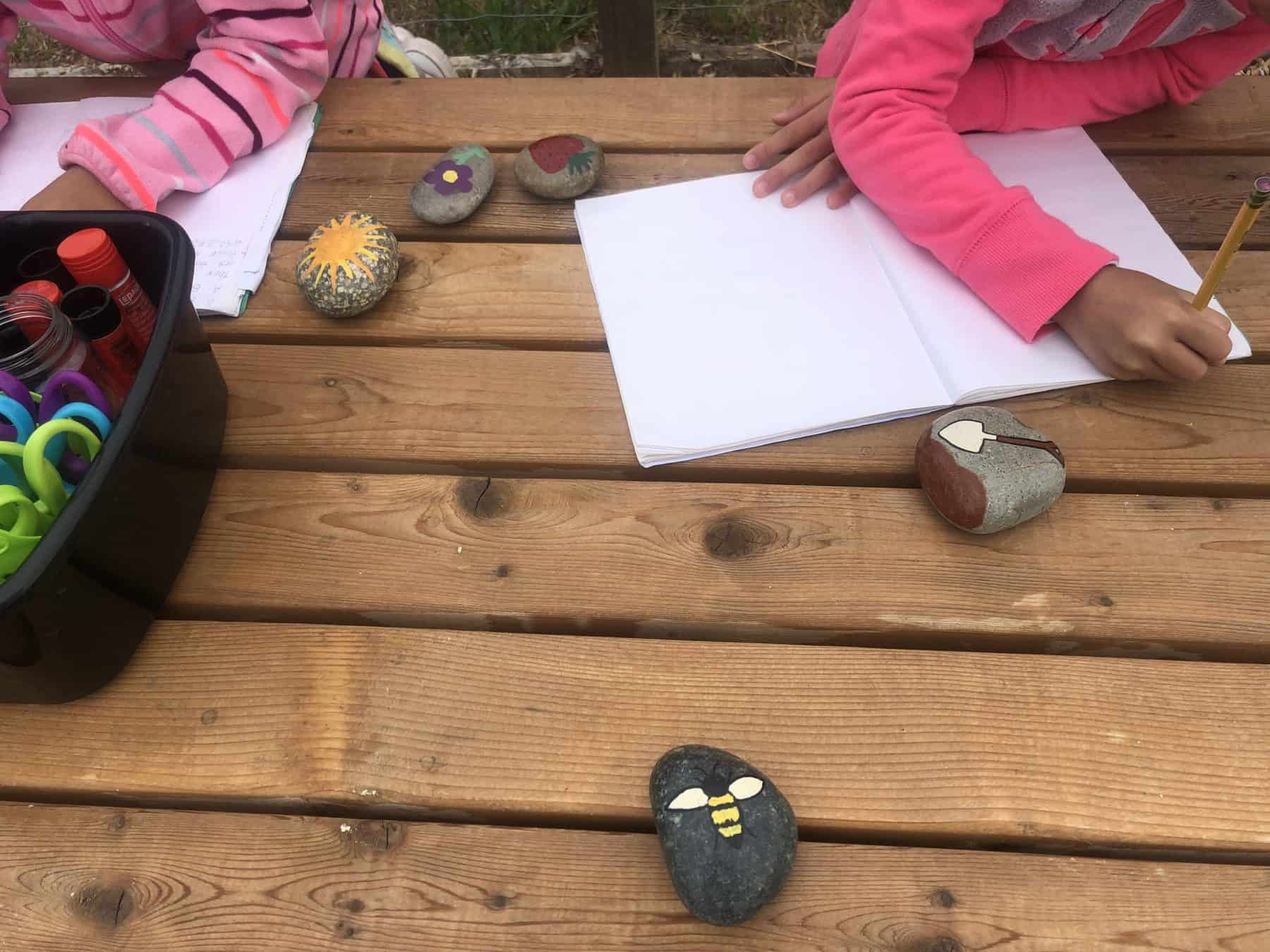- filed under: Literacy Outdoors, Loose Parts
Garden Literacy With Story Stones

Story stones for imaginative play
Rocks and stones can be considered a “loose part”. That means they do not have a pre-determined story attached to them, and children are free to use their imaginations to create stories and playscapes that best reflect their experiences, worries, frustrations or stories they want to work through. Story stones can offer an introductory opportunity to connect imaginative play with oral and written storytelling, which allows for multiple entry points for engaged story creation. Particularly for children who are overwhelmed by writing tasks, images painted or drawn onto stones can be exciting and inspiring sources for stories. As teachers, we are always inspired by the variety of stories that are generated based on one story stone. Every stone has a story to tell and every child will tell the story differently!
Story telling with stones can be enhanced with other loose parts from the outdoors, such as leaves, shells, and pinecones, to expand and extend the story telling.
RELATED POST: BEST BOOKS FOR INTRODUCING LOOSE PARTS PLAY
How to make a story stone
Begin by collecting rocks from your community and garden. Look for stones that are approximately the size of a child’s palm, and that have at least one flat side, which makes drawing or painting easier and the image of higher quality. Generally, lighter coloured rocks are best because paint colours show more vibrantly as compared to darker coloured stones. If you have access to a beach, look for them there, the water weathers the stones producing oval, smooth stones—perfect for story stones!

Required Materials
- stones or rocks
- black sharpie markers or felt pens
Optional materials
- cut out images from magazines, books, or flyers
- paint
- glue or modge podge
Once the stones have been collected, consider whether you want the images on the stones to follow a theme, to draw on familiar experiences, familiar stories to be re-told, or to be a collection of random images. The stones in this image were made in our school garden, and represent common and familiar story elements in the outdoor classroom.

We drew different components of the garden that the children have connections to, such as shovels, bees, and flowers. We recommend first sketching the chosen image on the stone with pencil before adding paint or using sharpies to outline. Try to plan for the picture to take up most of one of the flat surfaces. Then, fineline with a sharpie or add acrylic paint directly onto the stone.

We let the paint dry completely before painting a layer of Mod Podge over top of the flat side of the stone with the picture. When first painted, the Mod Podge appears as a white glue, but it dries clear and acts as a seal to prevent the acrylic paint from chipping. It is important that the acrylic paint has enough time to dry before the Mod Podge is added to avoid the risk of smudging.

Once the Mod Podge finishes drying, you have story stones that are ready for use.
Related Post: Story Telling in Nature

Playful Literacy With Story Stones
Go ahead and use the stones in whatever way makes sense for your child. Kindergarten students might simply play with the stones, using each stone as a character in the stories that they imagine and share orally. Younger primary students might chose a story stone, and draw a story based on the picture on that stone. They could then narrate their picture story orally. Upper primary and intermediate students can make their own story stones and use them to play through a story creating the setting, characters and problems necessary for an engaging story. This can then be transferred to a written version of the story. In the outdoor classroom, we notice children who are typically disengaged during writing activities did not feel the pressure of writing when they had a stone, which means story stones can be helpful for encouraging diverse and inclusive story creation.
Story Stone Resources
Show Me a Story by Emily K. Neuburger
If You Find A Rock by Peggy Christian
More Literacy Outdoors Ideas
If you enjoy Pinterest, follow along for more literacy ideas outdoors!
